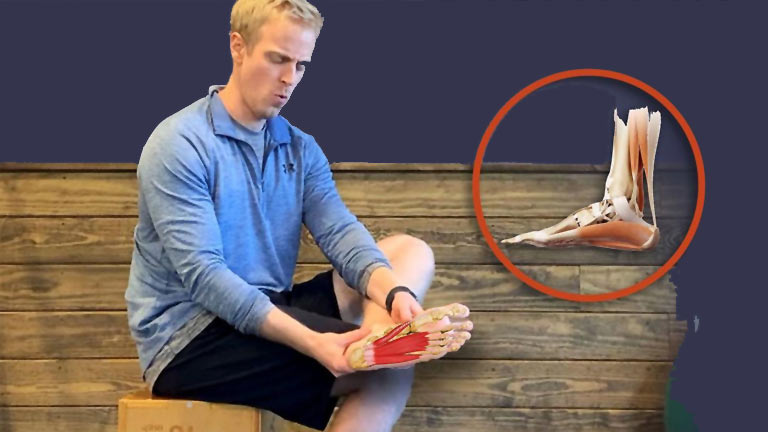
Pain and stiffness in the bottom of your foot, especially your heel, is most likely caused by plantar fasciitis (PLAN-tur fas-ee-I-tis).
Home treatments like rest, icing, and supportive braces often relieve symptoms. If they don’t, your doctor may recommend a cortisone shot in the damaged area or dry needling – an alternative medicine technique similar to acupuncture.
Causes of Plantar Fasciitis
Plantar fasciitis is one of the main causes of foot pain in the bottom of your foot and heel. It is caused by irritation to the plantar fascia, a band of tissue stretching from your heel bone through the arch of your foot and into your toes. The inflammation of the plantar fascia can cause sharp, stabbing pains that are most common when you take your first steps after waking up or after long periods of rest. The pain may also be felt while walking, running, or jumping.
Another condition that can cause pain in the bottom of your feet is metatarsalgia. This is a type of pain and inflammation in the ball of your foot, located under the metatarsal bones. It can be triggered by ill-fitting shoes, high heels, or activities that put extra pressure on the balls of your feet.
Heel spurs are another condition that can cause pain in the bottom of your foot and heel. Heel spurs are abnormal growths of bone that develop in the bottom of your foot. They can be a result of wearing shoes that don’t fit well or being overweight. They can also be a result of certain types of arthritis, such as osteoarthritis or rheumatoid arthritis.
Flat feet or fallen arches can also cause pain in the bottom of your foot and heel. This is because the arch of your foot isn’t as tall, which can put more pressure on your forefoot. People who play sports that require a lot of running and jumping can also be prone to this problem because these activities can increase stress on the bottom of your feet.
Other conditions that can cause foot pain include gout, arthritis, and nerve problems. A gout is a form of arthritis that affects the joints in your foot. This disease can cause pain in the bottom of your foot, especially in the area around your big toe. Arthritis can also cause pain in the bottom of your feet, but it’s more likely to occur in the middle of your foot or the heel. Lastly, nerve problems like peripheral neuropathy can cause the bottom of your feet to hurt.
Symptoms of Plantar Fasciitis
Plantar fasciitis pain is in the bottom of your heel or arch. It is caused by irritation of a thick, fibrous, ligament-like band on the bottom of your foot called the plantar fascia. This band runs from your heel bone to the ball of your foot and then to your toes.
Symptoms include stabbing pain that’s worse with your first steps when you get out of bed or after long periods of sitting. This pain decreases as you start moving or exercising but may increase again if you stop. If you’re overweight, have flat feet, or work a job where you stand for long periods of time, you might be more likely to develop this condition.
A doctor will examine your foot and ankle to see how the pain affects you. Your doctor may also do a test to measure the strength of your plantar fascia. This is done by asking you to stretch your foot while you’re in the sitting position. You’ll have to bend your knee and grab your toes with the hand of the other leg. Your doctor will then feel how tight your fascia is and how much it can give when you stretch it.
You can ease plantar fasciitis pain by taking it easy, using a heel cushion, and stretching your foot and ankle gently. Over-the-counter NSAIDs (like aspirin, ibuprofen, and naproxen) can reduce pain and swelling. If these measures don’t help, your GP may refer you to a physiotherapist or foot specialist (podiatrist). You might be given exercises and advised to wear shoes that support your feet.
Treatment of Plantar Fasciitis
Plantar fasciitis causes pain in the bottom of one or both heels. The pain is typically sharp and feels worse when you take your first steps out of bed in the morning or after sitting for a long time. It also flares up after running, walking, or standing for a while.
The pain is caused by damage or irritation to the plantar fascia, a thick band of fibrous tissue that runs from your heel underneath your arch to the ball of your foot and your toes. It helps the bottom of your footwork properly and absorbs shock when you walk or run. Doctors used to think that bony growths (heel spurs) caused the pain, but now they know that the problem is usually caused by the plantar fascia getting irritated and swollen.
Treatment options include resting your feet as much as possible, particularly limiting athletic activities that require repeated heel impact. You can also ice your foot for 10 to 15 minutes several times daily. You can do this by covering a frozen water bottle with a towel to protect your skin and then rolling the ice around on the bottom of your foot.
Wearing shoes that are well-fitting and cushioned can also help. You can buy over-the-counter shoe inserts designed to support your arches and cushion your foot as you walk or stand for long periods. You can also get special, custom orthotics for your shoes to provide more cushioning, but they are more expensive.
Lastly, you can try stretching your foot while you are in a seated position. To do this, you cross your affected foot over your other leg’s knee and gently grasp your toes with your hand. Slowly pull your toes toward you in a controlled manner and hold the stretch for about 10 seconds. Repeat the stretch 20 times on each foot.
If these treatments do not provide you with relief, your doctor may suggest other therapies, such as shockwave therapy or platelet-rich plasma injections. However, these techniques are less commonly used and have not been as thoroughly studied as the above-mentioned treatments.
Plantar Fasciitis Prevention
Nonsteroidal anti-inflammatory drugs, such as ibuprofen, help reduce pain and inflammation. Shoe inserts that limit stress on the arch of the foot may also help. A podiatrist, a doctor who specializes in feet, can recommend appropriate shoe inserts.
Choose supportive shoes with low to moderate heels, thick soles, and cushioning to prevent Plantar Fasciitis. Replace your shoes when they show signs of wear and tear. Avoid high-impact activities, such as running and dancing, which irritate the plantar fascia. Stretch your feet and ankles regularly to strengthen the arch muscles. Putting a towel or frozen bottle of water under your heel for an ice massage can also relieve pain. If your plantar fasciitis gets worse, see a podiatrist or foot and ankle specialist for treatment. The sooner you address the problem, the faster you’ll feel better.




